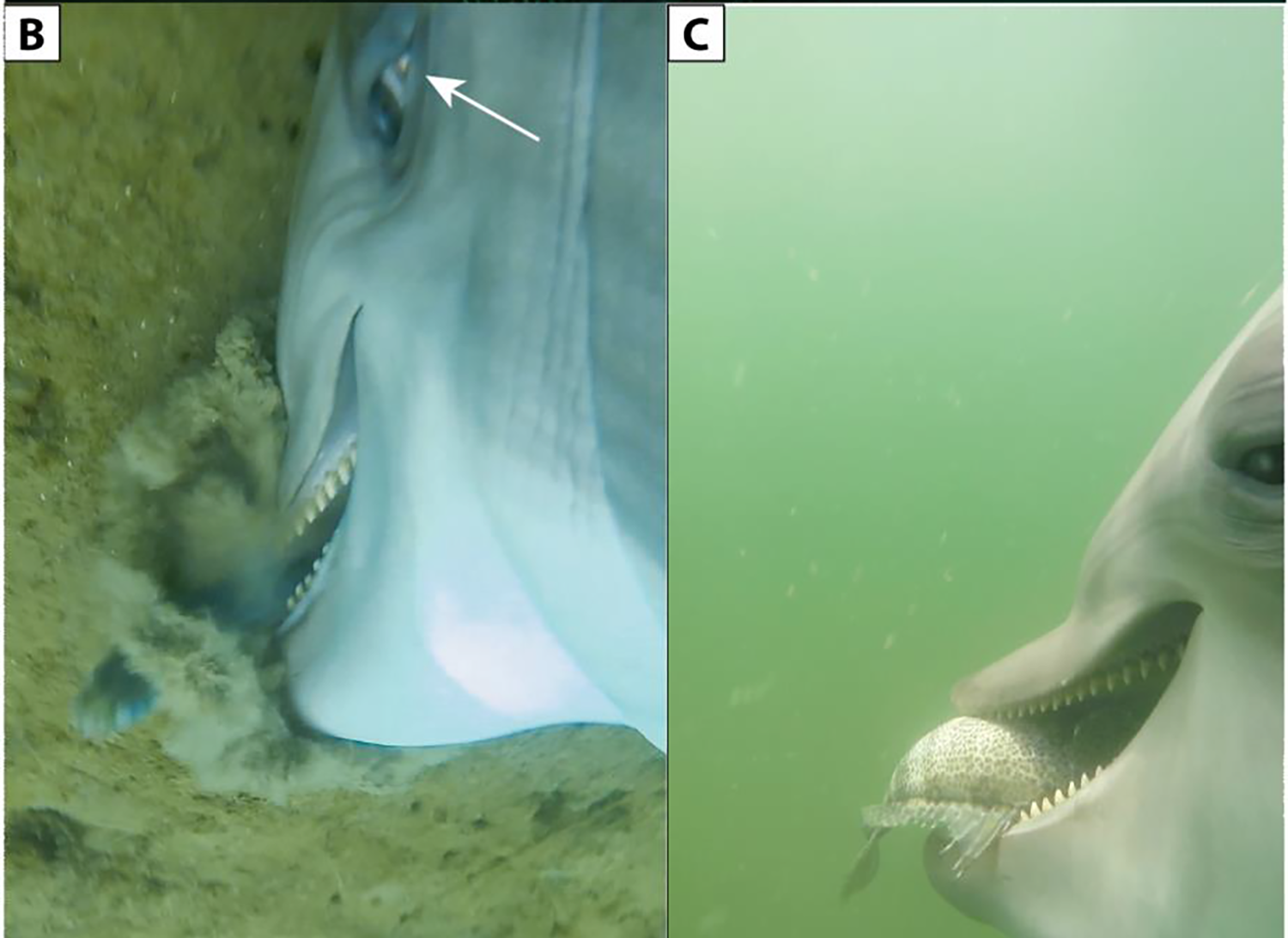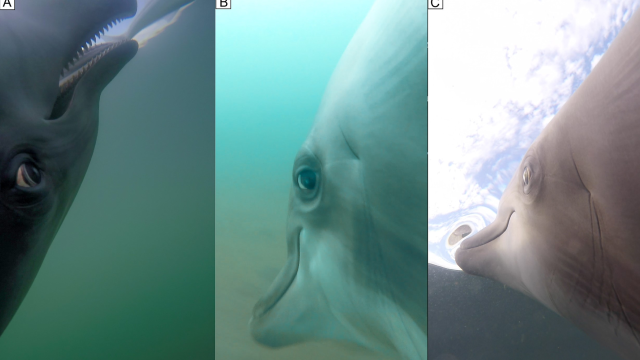In case you didn’t know, the U.S. Navy has militarised sea mammals that help identify undersea mines, defend against enemy swimmers, and protect about a quarter of the U.S. nuclear stockpile. Recently, a team of researchers equipped some of the Navy’s dolphins with cameras and captured some remarkable footage of the cetaceans hunting and feeding.
Though the dolphins are part of the Navy, they are allowed to do open-water swimming. The recent project witnessed six bottlenose dolphins (Tursiops truncatus) catching over 200 fishes and sea snakes in a seawater pool and in San Diego Bay off the coast of California. The team’s research detailing the dolphin’s hunting and eating methods is published in PLOS One.
Cameras attached to the dolphins with harnesses recorded video and audio over a six-month period. The audio was important because the researchers wanted to know more about how the dolphins communicated during their sojourns.

If you’re used to seeing dolphins from any other angle, the footage is a little startling. Some cameras were placed on the animals’ backs, giving a view of their blowhole, but others were on the animals’ sides, to best show their eyes and jaws.
“Fish continued escape swimming even as they entered the dolphins’ mouth, yet the dolphin appeared to suck the fish right down,” the researchers wrote. They ascribed that process to a method of feeding that toothed whales and other marine mammals use, in which the predator expands its throat to literally suck down prey.
The dolphins consumed an array of creatures: bass, croakers, halibut, pipefish, and smelt amongst them. The open-water dolphins also caught sea snakes, jerking their heads to help the serpents down their gullets. The research team proposes putting similar cameras on wild dolphins, to see whether their hunting and eating habits might be any different.
American naval use of dolphins stretches back to the 1960s, according to PBS. Dolphins were used by the Navy in Vietnam and the Persian Gulf. The program has been the subject of criticism, perhaps most notably by Ric O’Barry, a dolphin trainer who worked in the Navy’s dolphin program and released two of the program’s dolphins in 1996. Those two dolphins were later recaptured.
Other countries also have active military dolphin programs. In April, Russia deployed military dolphins to defend one of its Black Sea bases.
“They can swim away if they choose, and over the years a few have,” states the Naval Undersea Museum website. “But almost all stay.”
